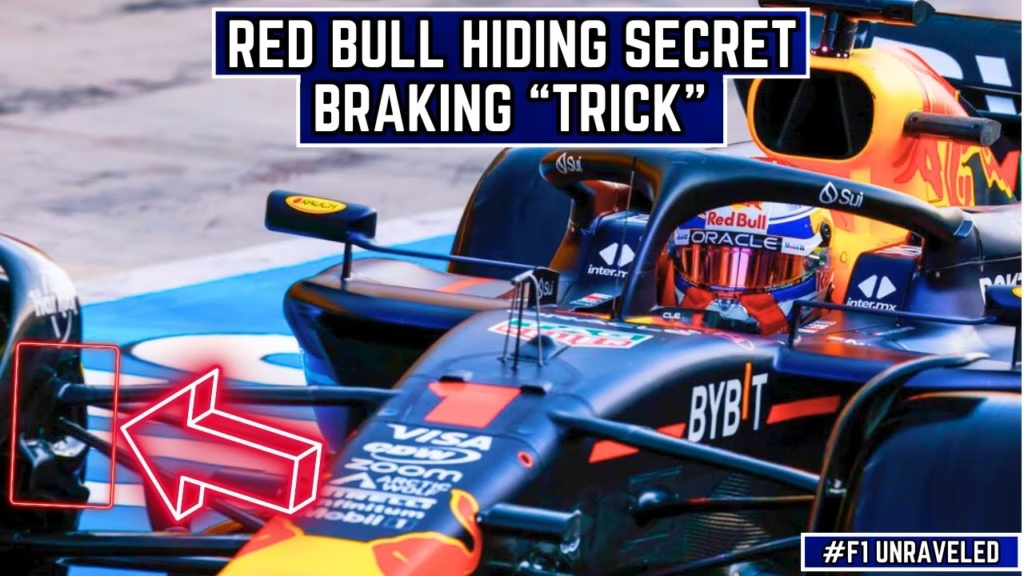Formula 1’s Competitive Landscape: McLaren’s Rise and Red Bull’s Challenges
Over the past few years, Formula 1 has witnessed significant shifts in competitive dynamics. The era of Red Bull’s dominance has faced disruption, as McLaren has emerged as a formidable force, overtaking Red Bull’s supremacy in both the 2024 and 2025 seasons. While McLaren celebrates its newfound success, Red Bull finds itself struggling with internal complications and technical concerns, leading to frustrations among its top drivers and management.
This shift has sparked controversy, with allegations from Red Bull regarding McLaren’s approach to tyre cooling. Accusations of rule violations have clouded McLaren’s achievements, though the team has strongly refuted any wrongdoing. As the competition intensifies, upcoming regulations may play a decisive role in shaping the future battle between these two powerhouses.
McLaren’s Remarkable Rise: A Story of Strategic Excellence
McLaren has long been a respected team in Formula 1, yet their return to championship-winning form marks one of the most significant comebacks in the sport’s history. Their resurgence began with a calculated approach to engineering, refining their aerodynamics, and optimizing their car’s performance to make the most of recent regulatory shifts. McLaren’s engineers have focused on innovative design elements that maximize efficiency, speed, and tyre wear—giving them an edge over competitors.
In addition to technical upgrades, McLaren’s strategic decisions on and off the track have contributed to their victories. Pit stop efficiency, tactical race management, and a strong driver lineup have played pivotal roles in securing championship points. The combination of superior vehicle technology and well-executed racing strategies led them to displace Red Bull from its dominant position.
Despite their achievements, controversy has emerged surrounding the legality of McLaren’s techniques. Red Bull has accused the team of utilizing illegal tyre cooling methods, suggesting that McLaren’s approach has provided them with an unfair advantage. These accusations remain under investigation, but McLaren has firmly denied any breaches of regulations, standing by their engineering innovations as entirely compliant with FIA rules.
Red Bull’s Struggles: Internal Challenges and Performance Issues
As McLaren rises, Red Bull faces unexpected hurdles. Their RB21 car has encountered persistent difficulties, including mechanical reliability issues and suboptimal aerodynamic performance. These technical concerns have led to frustration within the team, with drivers struggling to extract maximum performance from their vehicles.
One of the most vocal figures in this scenario is Max Verstappen, Red Bull’s star driver. Known for his fierce competitiveness, Verstappen has expressed dissatisfaction with the RB21’s inconsistencies, hinting at the growing concerns among the team’s leadership. His frustration is reflective of broader internal struggles within Red Bull, which extend beyond the car’s technical aspects.
Behind the scenes, Red Bull appears to be dealing with managerial disputes and disagreements on engineering priorities. The team’s ability to maintain synergy between its leadership, designers, and drivers is crucial in overcoming these obstacles. If these problems persist, Red Bull risks losing further ground to McLaren and other emerging competitors.
Upcoming Regulations: How Rule Changes Could Reshape the Battle
In the dynamic world of Formula 1, regulatory modifications often play a decisive role in shifting competitive advantages. As McLaren enjoys its dominance, upcoming rule changes could influence their aerodynamic strengths, forcing adjustments to maintain their edge. With the FIA planning modifications to technical regulations, all teams must adapt their designs accordingly.
For Red Bull, these changes present an opportunity to reset their performance trajectory. If they can address the RB21’s deficiencies and align their engineering approach with the new rules, they could reclaim lost ground. However, simply relying on regulatory shifts may not be enough—Red Bull must also resolve its internal challenges and optimize its race strategies to regain competitive stability.
McLaren, on the other hand, must ensure that their advancements remain effective under the new guidelines. While their current advantages have propelled them to the top, adapting to rule changes will be essential for sustaining their dominance. If McLaren successfully navigates these modifications, their reign could extend further into the coming seasons.
Conclusion: A New Era in Formula 1?
The transformation in Formula 1’s competitive landscape signals a potential new era. McLaren’s rise to supremacy has disrupted Red Bull’s long-standing dominance, creating a fascinating dynamic in the championship battle. While Red Bull struggles with technical and managerial concerns, McLaren continues to assert its position at the top.
Accusations, controversies, and rule changes will undoubtedly shape the future direction of this rivalry. Whether Red Bull can resolve its internal conflicts and reclaim championship momentum, or if McLaren will continue to strengthen its grip on Formula 1’s top position, remains one of the most intriguing questions for fans and analysts alike.
With ongoing developments and high-stakes races ahead, Formula 1’s competitive narrative is far from settled. The coming seasons will provide clarity on whether McLaren’s rise is a long-term shift or if Red Bull can overcome its challenges to stage a remarkable comeback. Regardless of the outcome, the excitement and drama of the sport continue to captivate audiences worldwide.
